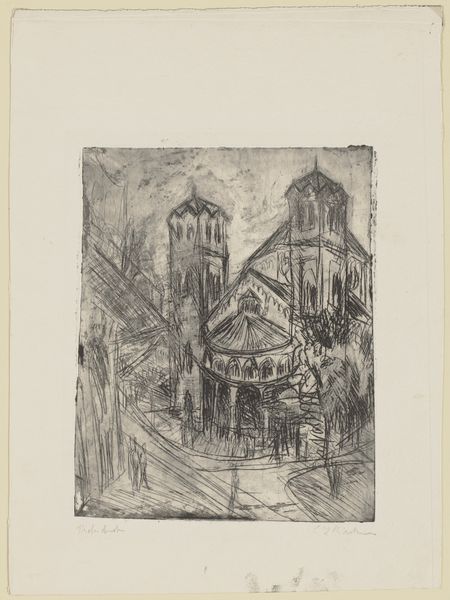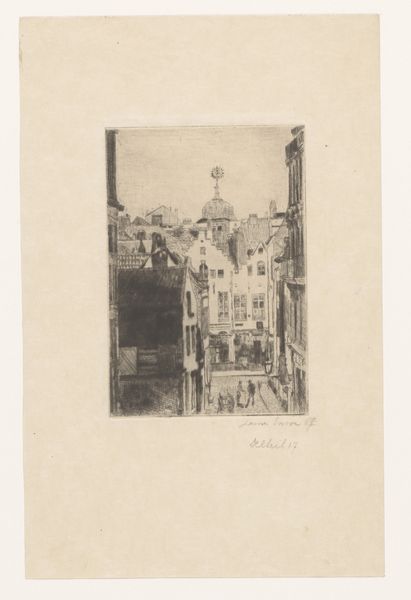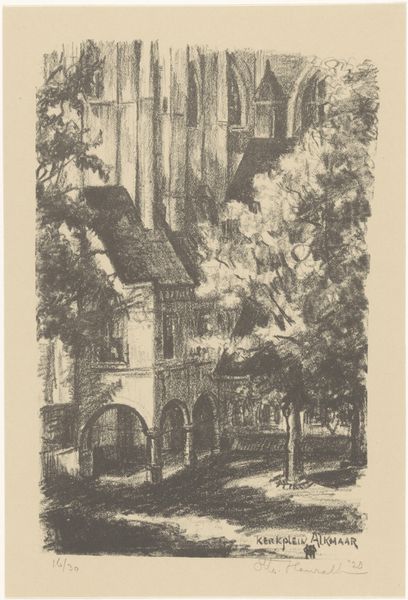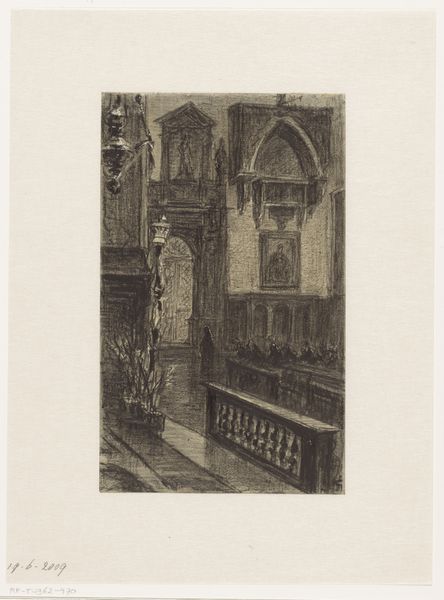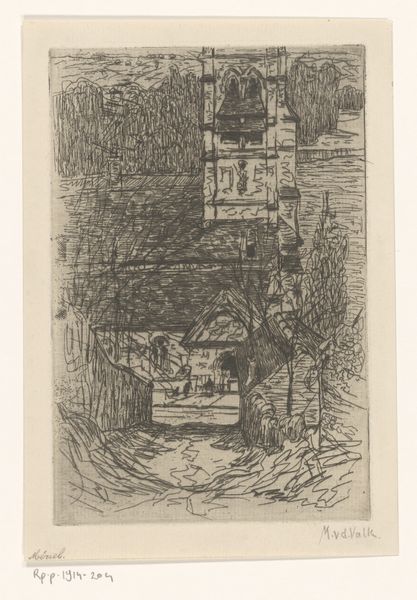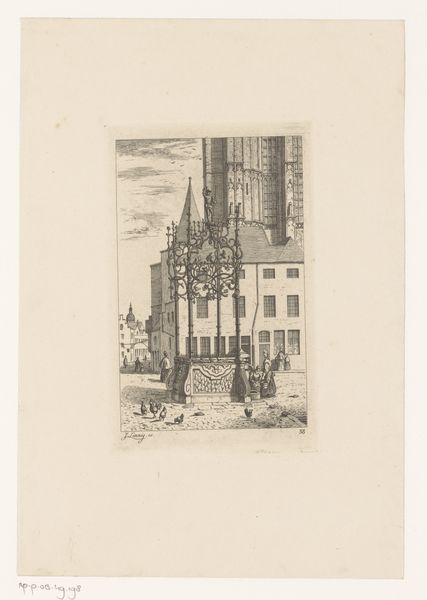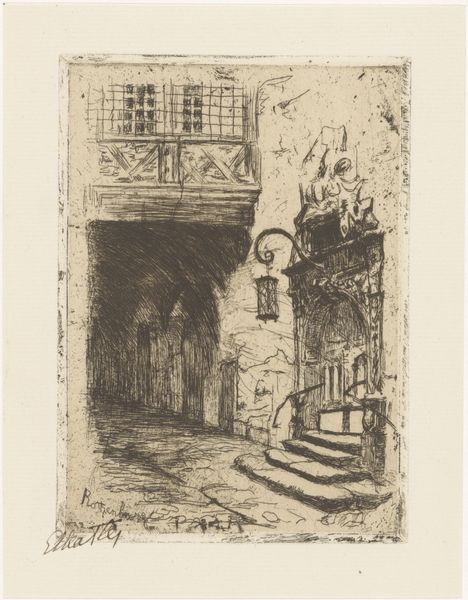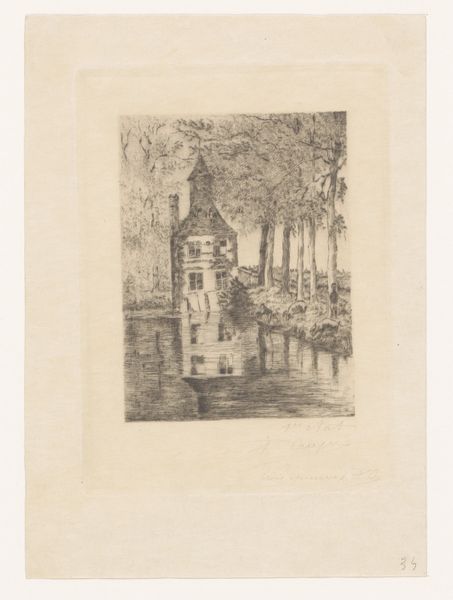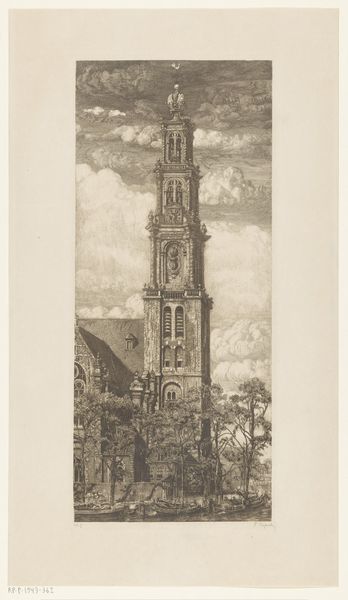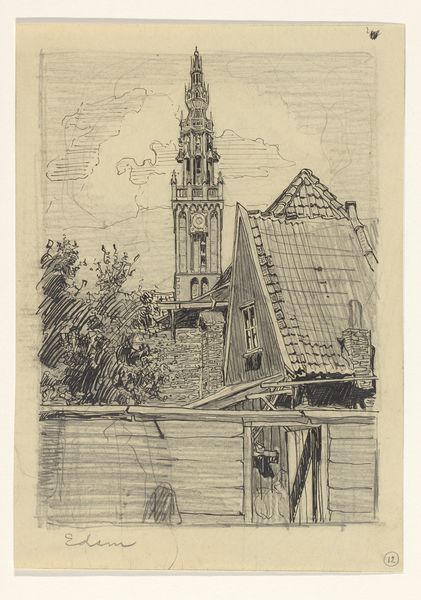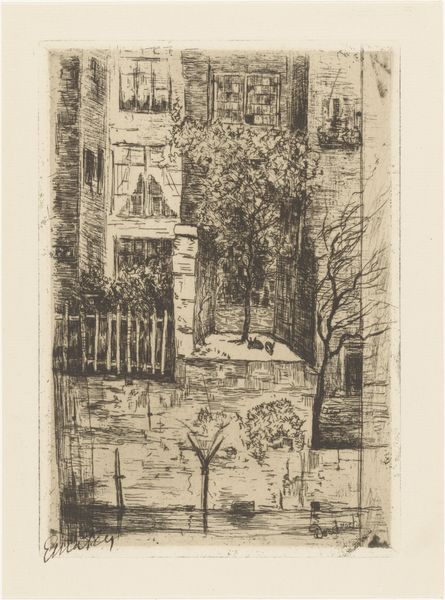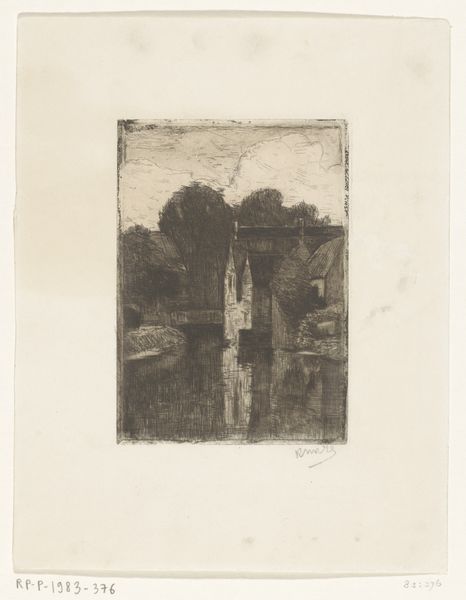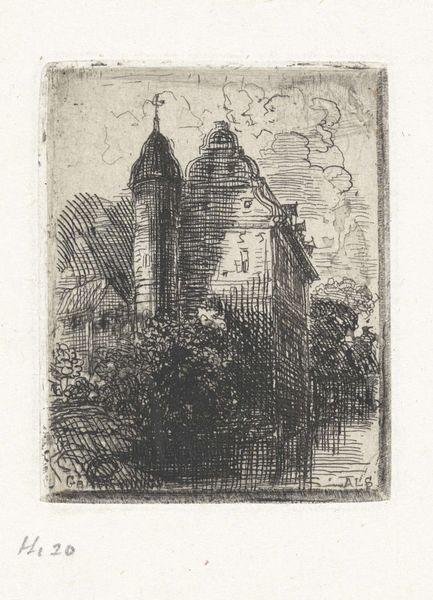
drawing, print, etching, paper, ink
#
drawing
# print
#
etching
#
landscape
#
paper
#
ink
#
linocut print
#
line
#
cityscape
Dimensions: height 207 mm, width 108 mm, height 273 mm, width 184 mm
Copyright: Rijks Museum: Open Domain
Editor: So, here we have Hans Botermans’s "Stadsgezicht," created before 1936. It's an etching, a drawing really, on paper using ink – giving it this almost ghostly quality. The towering church and cramped buildings create a slightly unsettling, claustrophobic feel, even though it's a cityscape. How would you interpret this work? Curator: Considering the period, it is tempting to see this “cityscape” through a socio-political lens. Notice the looming church. It dominates the visual field, perhaps reflecting the enduring power of religious institutions in shaping civic life during that era. How does the church's size relative to the other buildings strike you? Editor: Good point! It definitely emphasizes the church's presence. The houses almost seem secondary. Was there something about urban planning back then? Curator: Indeed. Think about urban development, often driven by religious or political agendas. The composition isn't just aesthetically pleasing, it also illustrates hierarchies within the city. Etchings like these served not only as art, but as historical documents of a changing urban landscape. Also consider who would consume these images. Did the average person have access to this? Editor: I hadn’t thought of that. It probably reflects the values and perspectives of a more privileged class then. So, the “cityscape” is more than just a pretty picture. Curator: Precisely. It reveals power dynamics and the socio-political climate shaping urban spaces. Next time, examine not just what is shown, but why and for whom. Editor: That's a really interesting point. It makes you wonder what other stories the city held. Thanks!
Comments
No comments
Be the first to comment and join the conversation on the ultimate creative platform.
